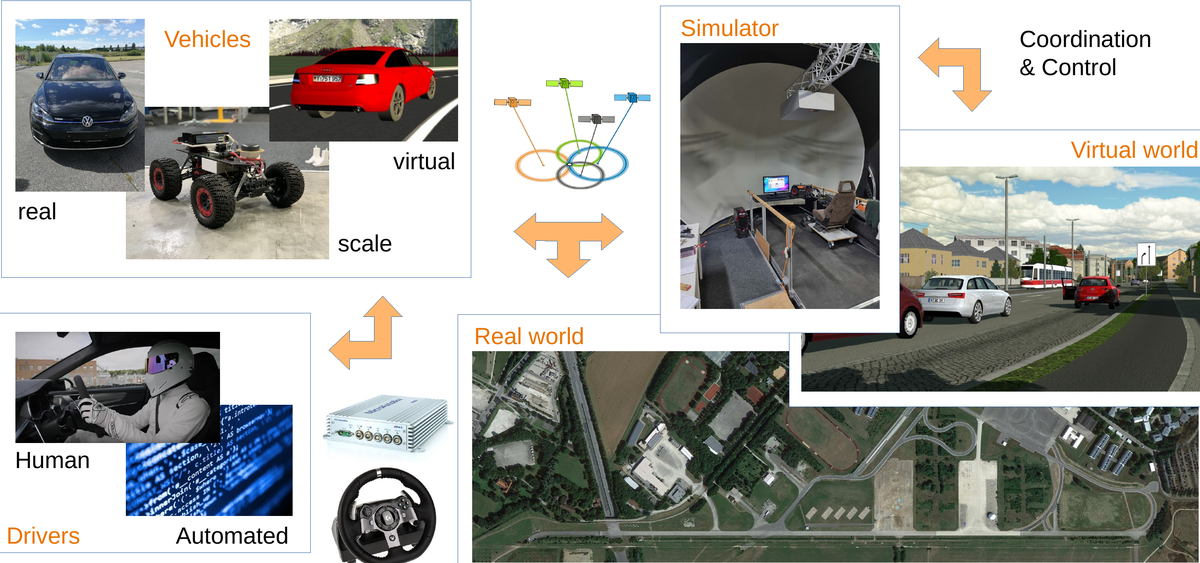Overview
Autonomous driving has attracted a lot of attention during the last years and faces many technical challenges regarding online control and object detection in sensor data. Our focus is on the control part of autonomous or automated vehicles and we are developing optimization-based path planning and path following techniques. This includes model-predictive control schemes and machine learning approaches. A particular focus is on the coordination of interacting vehicles. To this end we are creating a framework which combines real and virtual systems. This framework allows to investigate even potentially dangerous situations in a safe and reproducable way. Moreover, it is flexible in the sense that human drivers and virtual or real automated vehicles can interact in realistic traffic scenarios.

The following methods are
- real-time optimization methods and sensitivity analysis for path planning
- linear and nonlinear model-predictive control (MPC) for path following and path planning
- dynamic inversion control for path following
- DAE control techniques for path following
- coordination of interacting vehicles using hierarchies, generalized Nash equilibria, and dynamic scheduling
- reinforcement learning (RL) for path planning and collision avoidance
- dynamic programming (DP) for path planning and dynamic scheduling
- reachable sets for worst-case prediction and probability-based prediction
The methods are implemented and tested on our test vehicles:
- Vehicle-in-the-loop
- automated eGolf
- scale cars
We use the robot operating system ROS2 and the Unreal Engine for visualization.